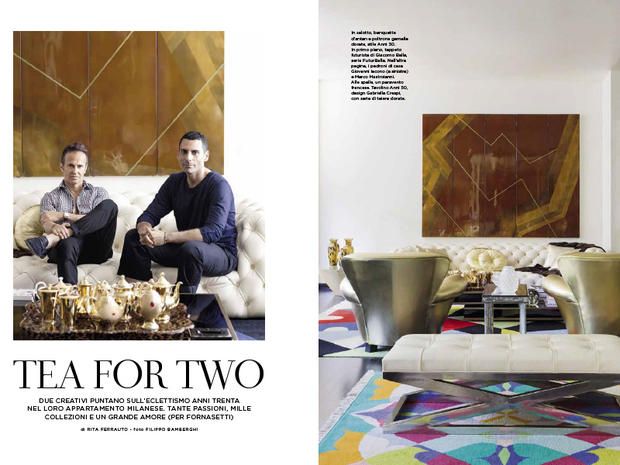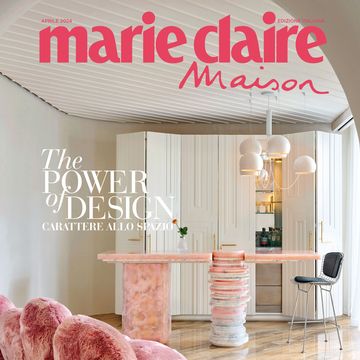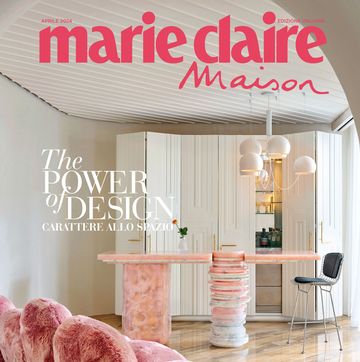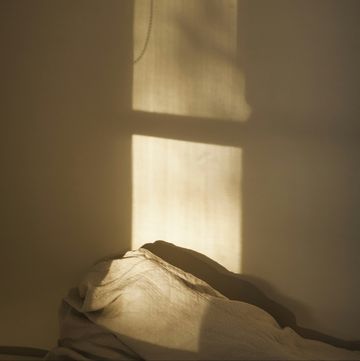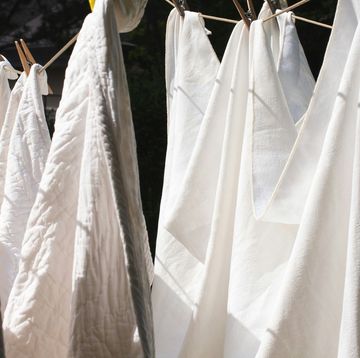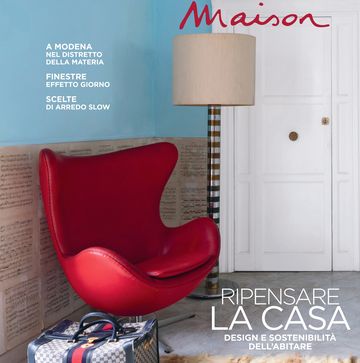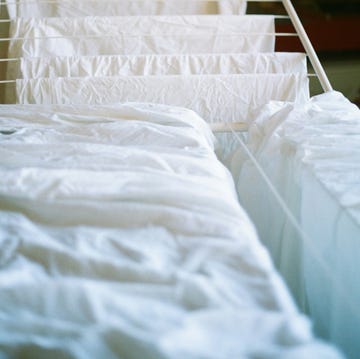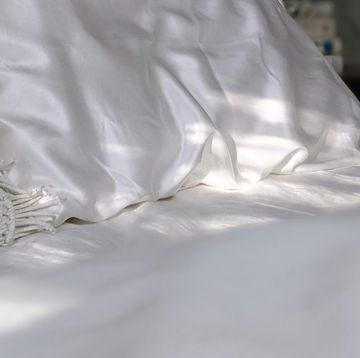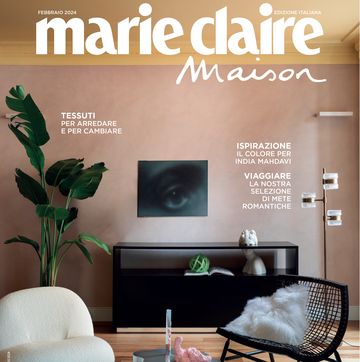Non solo verticalità sfrontata e slanci di moderna audacia. Milano sfoggia anche compatte architetture della prima metà del Novecento: strutture dal rigore ammaliante, che punteggiano il tessuto urbano. Uno di questi palazzi ospita l'appartamento di Marco Mastroianni e Giovanni Iacono, entusiasta omaggio all'estro dei celebri talenti delle decadi Trenta e Quaranta, con un tocco di leggera ironia. Le professioni dei proprietari sono molto creative: Marco lavora come textile designer per Louis Vuitton, mentre Giovanni è titolare di un salone di bellezza milanese dall'atmosfera coerentemente Thirties.
Condividono la medesima visione estetica e, in particolare, la sconfinata ammirazione per Piero Fornasetti, presente ovunque nella residenza con una parata di arredi e accessori che fanno da fil rouge tra le varie stanze. «Non abbiamo mai smesso di acquistare le sue opere. E in venticinque anni ne abbiamo raccolte così tante da non riuscire più a esporle tutte; qualcosa resta custodito negli armadi », confessa sorridendo Giovanni. Un'altra collezione degna di nota è rappresentata dalle teiere: «Esercitano su di noi un fascino irresistibile, soprattutto se antiche o di provenienza russa».
A scandire una sintassi equilibrata tra i volumi dell'abitazione e queste passioni imperiose è stata chiamata l'architetto Barbara Falanga: formazione cosmopolita, stessi codici stilistici e una lunga permanenza a New York, che le ha instillato la predilezione per gli spazi ariosi. «Abbiamo un comune senso del gusto, il piacere di vivere circondati dal bello e l'eclettismo scanzonato», puntualizza Giovanni. La prima trasformazione, però, è stata di tipo strutturale. Pur senza rivoluzionare il layout preesistente, l'anticamera è stata ampliata e posta in aperto dialogo con il living e la sala tv, in un mood da loft East Coast. Una massiccia colonna portante è stata mimetizzata con un'opera metallica dell'artista Andrea Salvetti, impreziosita da un pattern di alligatori stilizzati.
L'effetto è di una quinta scultorea, che delimita un palcoscenico: «In fondo tutti lo meritiamo, perché la vita di ciascuno di noi è pura arte», spiega Falanga, rinomata per l'attitudine a interpretare il lato più fantasioso dei committenti. Il suo dogma è la fuga dalla serialità attraverso interni haute couture, tagliati su misura come un abito irripetibile. Quanto alle pareti, sono state trattate con un particolare stucco veneziano illuminato da bagliori golden, che ha il potere di conferire una personalità carismatica alle stanze. Sullo sfondo di questa tela dal candore luminescente, Barbara ha disposto oggetti scovati da prestigiosi antiquari e nei migliori store internazionali, come uno specchio di Gio Ponti (in origine una vetrata) con i segni zodiacali.
Straordinari tappeti futuristi si avvicendano a terra, compreso un esemplare di Balla, che con la sua fantasmagoria di cromie e grafismi regala dinamismo al salone, spiccando sul parquet in legno ebanizzato. «È tutto rigorosamente autentico, a rappresentare l'esprit del XX secolo. La mia decorazione risulta sempre attuale perché prediligo i grandi maestri non soggetti alle mode del momento. Gio Ponti e Luigi Caccia Dominioni sono oggi più vitali che mai». I mobili d'epoca e le disparate passioni di Marco e Giovanni fluiscono armoniosamente, in una sorta di variabile costante. Gli ambienti si susseguono conformi per texture, nuance e linee, seguendo il filo conduttore dei tocchi d'oro opaco, ricorrenti sui rivestimenti delle bergère francesi in soggiorno, nel maestoso tavolo custom-made della zona pranzo e in alcuni sapienti, quanto minuziosi, dettagli décor. «Adoro questo metallo prezioso. Inalterabile, dà il senso della vittoria sul tempo», argomenta Falanga.
L'allure vintage è spezzata da divertiti guizzi postmoderni, scelte anticonvenzionali come lo squillante – e inatteso – verde mela sui muri della cucina, le fotografie dei divi di Hollywood acquistate a un'asta e schierate nel bagno dal voluttuoso mosaico di tessere nere lucide; i continui rimandi al coccodrillo (dalla potente simbologia nell'Antico Egitto), effigiato non solo nella colonna in ingresso, ma citato pure su sedute e vassoi. Certi angoli sembrano invece evocare le atmosfere incantate di Lewis Carroll e della sua Alice, tra specchiere enigmatiche, teapot che paiono animarsi per magia e il cornetto scaramantico in mostra su una consolle, dalle paradossali proporzioni extralarge. Massima esaltazione, infine, della dimensione biografica dei padroni di casa. «La sontuosa wallpaper del boudoir a tema Roma pompeiana, per esempio, è stata realizzata pensando a Marco, che si esprime attraverso i tessuti e ha un forte legame con la capitale. Anche la tenda scenica nei toni del viola in camera da letto è stata confezionata in esclusiva per lui», conclude Barbara. È il senso profondo dell'attitudine bespoke: il lusso di sentirsi unici, in una sartorialità tutta da vivere.
Tea for twoA creative duo focus on thirties eclecticism in their Milan home. So much passion, so many collections and enormous love (for Fornasetti)By Rita Ferrauto - Photos Filippo Bamberghi
Not just bold verticality and daring modern impulses. Milan also features compact architecture from the first half of the twentieth century: structures with bewitching rigour, that dot the urban fabric. One such building houses the apartment of Marco Mastroianni and Giovanni Iacono, an enthusiastic tribute to the creativity of the famous talents of the thirties and forties, with a slight touch of irony. They both work in very creative professions: Marco is a textile designer for Louis Vuitton, while Giovanni owns a Milanese beauty salon with a strong thirties ambience. The pair share the same aesthetic vision and, in particular, a boundless admiration for Piero Fornasetti, evident throughout their home with a parade of furniture and accessories that create the common thread between the different rooms. “We can’t stop buying his pieces.
Over twenty-five years we have gathered so many that we don’t have room to display them all; some are tucked away in our cupboards”, confesses Giovanni, smiling. Their teapot collection is also impressive: “We just can’t resist them, especially if they’re antique or they come from Russia”. To create a balanced syntax between the volumes of their home and their imperious passions, the couple called upon architect Barbara Falanga: a cosmopolitan background, common stylistic codes and a long stay in New York had instilled in her a preference for airy spaces. “We share the same sense of taste, the same pleasure in living surrounded by beauty and laidback eclecticism”, Giovanni explains. The initial transformation, however, was structural. Without revolutionising the existing layout, the hall was enlarged and placed in open dialogue with the lounge and TV room, introducing an East Coast loft vibe. A massive pillar was camouflaged with a work in metal by artist Andrea Salvetti, decorated with a pattern of stylised alligators.
The effect resembles a sculpted wing, at the edge of a stage: “Basically, it’s what we all deserve, because the life of every one of us is pure art”, says Falanga, renowned for her ability to interpret the more imaginative side of her clients. Barbara provides an escape from the humdrum, the mundane, through interior haute couture, made to measure just as a tailored outfit would be. The walls were treated with a special Venetian plaster illuminated by a golden glow, bringing charismatic personality to each space. To this background of luminescent candour, Barbara ordered objects unearthed by prestigious antique dealers and from the finest international stores, such as a mirror by Gio Ponti (originally a window) with the zodiac signs. Extraordinary futuristic rugs alternate on the ground, including a specimen by Balla, who with his phantasmagoria of colours and graphic elements gives dynamism to the living room, standing out against the ebonised wood parquet.
“It’s all strictly authentic, showcasing the twentieth century esprit. My decorating is always relevant, because I prefer the great masters not subject to the fashions of the moment. Gio Ponti and Luigi Caccia Dominioni are more vital today than ever”. The period furniture and Marco and Giovanni’s disparate passions flow harmoniously, in a sort of continuous variable. Textures, shades and lines wind between spaces, following the thread of the matt golden touches, recurring on the French bergère chairs in the lounge, in the majestic custom-made table in the dining area and in some careful, beautifully thought-out details. “I love this precious metal. Unalterable, it gives a sense of victory over time”, explains Falanga.
The vintage allure is interspersed by fun postmodern flashes, unconventional choices like shrill – and unexpected – green apple on the walls of the kitchen, the photographs of Hollywood stars bought at auction and lined up in the bathroom with its voluptuous mosaic of shiny black tiles; the repeated references to the crocodile (a powerful symbol in ancient Egypt), portrayed not only in the entrance hall column, but also cited on seats and trays. Certain corners seem to evoke the enchanting charm of Lewis Carroll and his Alice, between enigmatic mirrors, teapots that seem to come to life by magic and superstitious horns on display on a console, with paradoxical oversized proportions. Also key here, finally, is the biographical dimension of the home for its owners. “The sumptuous Rome Pompeii themed wallpaper in the boudoir, for example, is a nod to Marco, who expresses himself through fabrics and has a strong connection to the capital. Even the stage curtain in purple tones in the bedroom was created exclusively for him”, concludes Barbara. A deep sense of bespoke attitude: the luxury of feeling unique, in a truly tailored home.
Nella foto
In salotto, banquette d'antan e poltrone gemelle dorate, stile Anni 30. In primo piano, tappeto futurista di Giacomo Balla, serie FuturBalla. Nell'altra pagina, i padroni di casa Giovanni Iacono (a sinistra) e Marco Mastroianni. Alle spalle, un paravento francese. Tavolino Anni 50, design Gabriella Crespi, con serie di teiere dorate.
